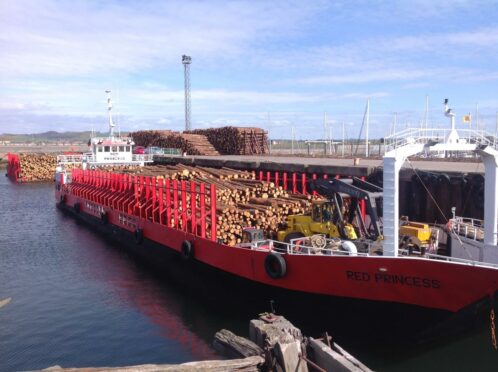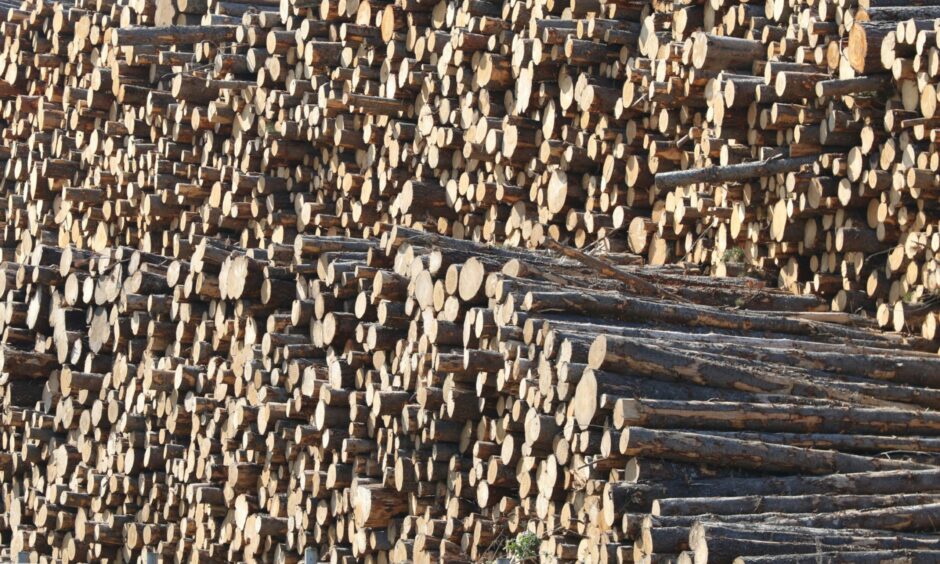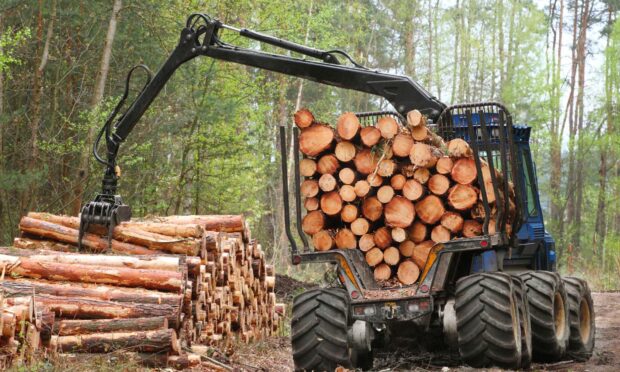No part of the UK’s economy has remained untouched by the chronic shortage of lorry drivers, and the forestry and wood processing industry is no exception.
In Scotland, it’s a significant industry, employing well over 25,000 people and delivering more than £1 billion in added value to the economy every year.
Drivers of heavy goods vehicles (HGVs) are a vital part of the supply chain – moving finished wood products around, but also bringing timber from the forest to sawmills and other wood processors in the first place.
There are major challenges in moving timber, especially in remote areas with poor road networks.
That’s why Confor, as the trade body for sustainable forestry businesses, is working with partners and government on a range of alternatives to move timber – and where possible, to take it off the roads altogether. On the eve of global green super-summit COP26, this is more important than ever.
In parts of Scotland, rail can be a good alternative to moving timber.
One train can replace multiple HGV trucks and in addition to environmental benefits, there’s the bonus of freeing up much-needed drivers.
One project in the pipeline, a railside loading bay in Altnabreac, Caithness, could see 400 timber lorry journeys replaced by just 25 rail trips.
Another, which involves hauling timber from Rannoch Forest, near Pitlochry, will slash 4,000 annual lorry trips that currently use a single fragile road – an action which could save around 650 tonnes of carbon dioxide emissions annually.
A trial of the Caithness project, involving 10,000 tonnes of timber, is planned – involving Scottish Woodlands Ltd, Caledonia Forest Land Investment Ltd and Highlands & Islands Transport Partnership (HITRANS).
Specialist haulage vehicles will transport timber from the forest to the loading bay where it will be stacked, then lifted onto rail wagons.
If planning permission is granted, three trains will run to Inverness weekly, avoiding interference with existing timetables.
The project follows a six-week trial in autumn 2020 when 6,000 tonnes of timber (harvested by Munro Harvesting of Dingwall from Brawlbin, near Loch Calder) was hauled by rail from Georgemas Station to Inverness.
This successful trial was supported by a Freight Fund grant from Transport Scotland to Victa Rail.
The second project, which includes a log stacking and timber loading facility north of Rannoch railway station, could move more than 500,000 tonnes of timber out of Rannoch Forest over a decade.
Several partners, including the Scottish Government and BSW Timber Ltd, have signed a ‘memorandum of understanding’ to show their commitment to the scheme.
Timber is also moved by sea, mainly on the west coast, from places including Kyle of Lochalsh and Fort William.
There are regular timber ferry movements from Argyll to the Glennon Brothers sawmill in Troon, Ayrshire, helping avoid well-known traffic blackspots like the A83 Rest and Be Thankful pass, frequently blocked by landslides.
The Scottish Government and local authorities have supported our industry through its Strategic Timber Transport Fund to help fund projects like this and build forest roads and improve existing roads where there is no rail or sea alternative.
The most recent initiative supported by the Fund is a new floating-pier sea terminal at Auliston Point, near Drimnin in Morvern.
Opened this summer, it has already allowed thousands of tonnes of timber and hundreds of 44-tonne trucks to be taken off fragile local roads.
As COP26 approaches, forestry and wood takes its environmental responsibilities very seriously.
Moving timber by rail and by sea helps decarbonise transport and reduces wear and tear on fragile rural road networks.
But this is also about minimising the impacts on local communities and delivering timber in a greener way to wood processors, boosting Scotland’s rural economy and safeguarding jobs.
Norbord, recently purchased by US giant West Fraser, has invested almost £100 million in its plant at Dalcross, near Inverness.
James Jones & Sons, with wood processing sites in Aboyne, Forres, Mosstodloch and Kirriemuir, has also invested heavily in recent years, including the purchase in March of GT Timber Ltd, a well-established timber business in northern England and southern Scotland.
Meanwhile, John Gordon & Son aims to invest £1m each year at its mill in Nairn.
The forestry industry in Scotland is in strong economic health and has confidence to invest further, providing more rural jobs and economic growth.
It is also thoroughly committed to its environmental responsibilities and is strategically vital in Scotland’s efforts to become net-zero by 2045, thanks to the three Ss:
● Sequestration: as trees grow, they sequester, or soak up, carbon.
● Storage: harvesting trees and making wood products (like timber frames for houses, fencing ,and boards for flooring and cabinets in our homes) stores carbon;
● Substitution: using timber in construction substitutes carbon-heavy materials like concrete and steel.
Scotland is leading the UK in planting trees – in mixed-species forests specifically designed to deliver multiple benefits for our environment, economy and society.
At a time when the eyes of the world are on Scotland, and on the environment, there is a great opportunity to showcase our industry. Moving timber in a greener way is part of that.
● Stuart Goodall is Chief Executive of Confor: promoting forestry and wood


